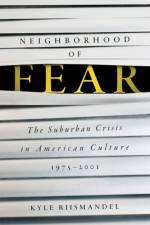av Kyle Riismandel
617
How-haunted by the idea that their suburban homes were under siege-the second generation of suburban residents expanded spatial control and cultural authority through a strategy of productive victimization.The explosive growth of American suburbs following World War II promised not only a new place to live but a new way of life, one away from the crime and crowds of the city. Yet, by the 1970s, the expected security of suburban life gave way to a sense of endangerment. Perceived, and sometimes material, threats from burglars, kidnappers, mallrats, toxic waste, and even the occult challenged assumptions about safe streets, pristine parks, and the sanctity of the home itself. In Neighborhood of Fear, Kyle Riismandel examines how suburbanites responded to this crisis by attempting to take control of the landscape and reaffirm their cultural authority.An increasing sense of criminal and environmental threats, Riismandel explains, coincided with the rise of cable television, VCRs, Dungeons & Dragons, and video games, rendering the suburban household susceptible to moral corruption and physical danger. Terrified in almost equal measure by heavy metal music, the Love Canal disaster, and the supposed kidnapping epidemic implied by the abduction of Adam Walsh, residents installed alarm systems, patrolled neighborhoods, built gated communities, cried "e;Not in my backyard!,"e; and set strict boundaries on behavior within their homes. Riismandel explains how this movement toward self-protection reaffirmed the primacy of suburban family values and expanded their parochial power while further marginalizing cities and communities of color, a process that facilitated and was facilitated by the politics of the Reagan revolution and New Right.A novel look at how Americans imagined, traversed, and regulated suburban space in the last quarter of the twentieth century, Neighborhood of Fear shows how the preferences of the suburban middle class became central to the cultural values of the nation and fueled the continued growth of suburban political power.

